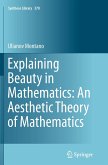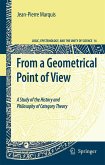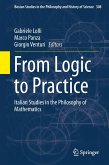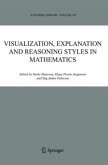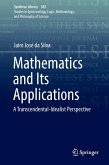This book develops a naturalistic aesthetic theory that accounts for aesthetic phenomena in mathematics in the same terms as it accounts for more traditional aesthetic phenomena. Building upon a view advanced by James McAllister, the assertion is that beauty in science does not confine itself to anecdotes or personal idiosyncrasies, but rather that it had played a role in shaping the development of science. Mathematicians often evaluate certain pieces of mathematics using words like beautiful, elegant, or even ugly. Such evaluations are prevalent, however, rigorous investigation of them, of mathematical beauty, is much less common. The volume integrates the basic elements of aesthetics, as it has been developed over the last 200 years, with recent findings in neuropsychology as well as a good knowledge of mathematics.
The volume begins with a discussion of the reasons to interpret mathematical beauty in a literal or non-literal fashion, which also serves to survey historical and contemporary approaches to mathematical beauty. The author concludes that literal approaches are much more coherent and fruitful, however, much is yet to be done. In this respect two chapters are devoted to the revision and improvement of McAllister's theory of the role of beauty in science. These antecedents are used as a foundation to formulate a naturalistic aesthetic theory. The central idea of the theory is that aesthetic phenomena should be seen as constituting a complex dynamical system which the author calls the aesthetic as process theory.
The theory comprises explications of three central topics: aesthetic experience (in mathematics), aesthetic value and aesthetic judgment. The theory is applied in the final part of the volume and is used to account for the three most salient and often used aesthetic terms often used in mathematics: beautiful, elegant and ugly. This application of the theory serves to illustrate the theory in action, but also to furtherdiscuss and develop some details and to showcase the theory's explanatory capabilities.
The volume begins with a discussion of the reasons to interpret mathematical beauty in a literal or non-literal fashion, which also serves to survey historical and contemporary approaches to mathematical beauty. The author concludes that literal approaches are much more coherent and fruitful, however, much is yet to be done. In this respect two chapters are devoted to the revision and improvement of McAllister's theory of the role of beauty in science. These antecedents are used as a foundation to formulate a naturalistic aesthetic theory. The central idea of the theory is that aesthetic phenomena should be seen as constituting a complex dynamical system which the author calls the aesthetic as process theory.
The theory comprises explications of three central topics: aesthetic experience (in mathematics), aesthetic value and aesthetic judgment. The theory is applied in the final part of the volume and is used to account for the three most salient and often used aesthetic terms often used in mathematics: beautiful, elegant and ugly. This application of the theory serves to illustrate the theory in action, but also to furtherdiscuss and develop some details and to showcase the theory's explanatory capabilities.
From the book reviews:
"This first monographic treatment of beauty in mathematics, a work of analytical philosophy, aims for 'a consistent literal interpretation of aesthetic judgements in mathematics'; 'literal' means taking 'beauty' at face value, not as code or metaphor for some specifically mathematical epiphenomenon. ... Provocative reading for students of mathematics, obviously, but also students of philosophy, aesthetics, and art. Summing Up: Recommended. Upper-division undergraduates and above." (D. V. Feldman, Choice, Vol. 52 (6), February, 2015)
"This first monographic treatment of beauty in mathematics, a work of analytical philosophy, aims for 'a consistent literal interpretation of aesthetic judgements in mathematics'; 'literal' means taking 'beauty' at face value, not as code or metaphor for some specifically mathematical epiphenomenon. ... Provocative reading for students of mathematics, obviously, but also students of philosophy, aesthetics, and art. Summing Up: Recommended. Upper-division undergraduates and above." (D. V. Feldman, Choice, Vol. 52 (6), February, 2015)
"This is one of the most interesting books I have read lately. It is unique and concerns a theme that is much talked between mathematicians and philosophers but until now no one had written so systematically about the subject. ... The book is complete, and it investigates with depth several topics about the beauty in mathematics. ... It is definitely a great book! I strongly recommend it to you if you are a mathematician or philosopher." (Philosophy, Religion and Science Book Reviews, bookinspections.wordpress.com, June, 2016)
"This first monographic treatment of beauty in mathematics, a work of analytical philosophy, aims for 'a consistent literal interpretation of aesthetic judgements in mathematics'; 'literal' means taking 'beauty' at face value, not as code or metaphor for some specifically mathematical epiphenomenon. ... Provocative readingfor students of mathematics, obviously, but also students of philosophy, aesthetics, and art. Summing Up: Recommended. Upper-division undergraduates and above." (D. V. Feldman, Choice, Vol. 52 (6), February, 2015)
"This first monographic treatment of beauty in mathematics, a work of analytical philosophy, aims for 'a consistent literal interpretation of aesthetic judgements in mathematics'; 'literal' means taking 'beauty' at face value, not as code or metaphor for some specifically mathematical epiphenomenon. ... Provocative readingfor students of mathematics, obviously, but also students of philosophy, aesthetics, and art. Summing Up: Recommended. Upper-division undergraduates and above." (D. V. Feldman, Choice, Vol. 52 (6), February, 2015)


